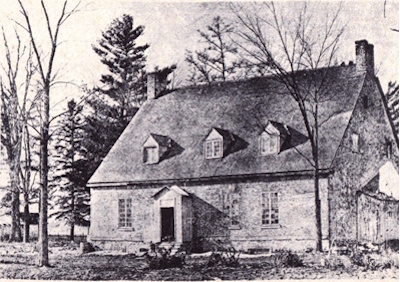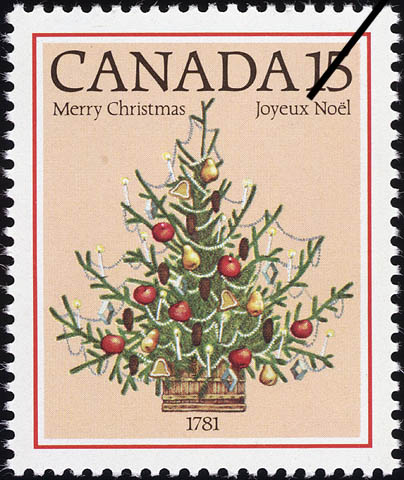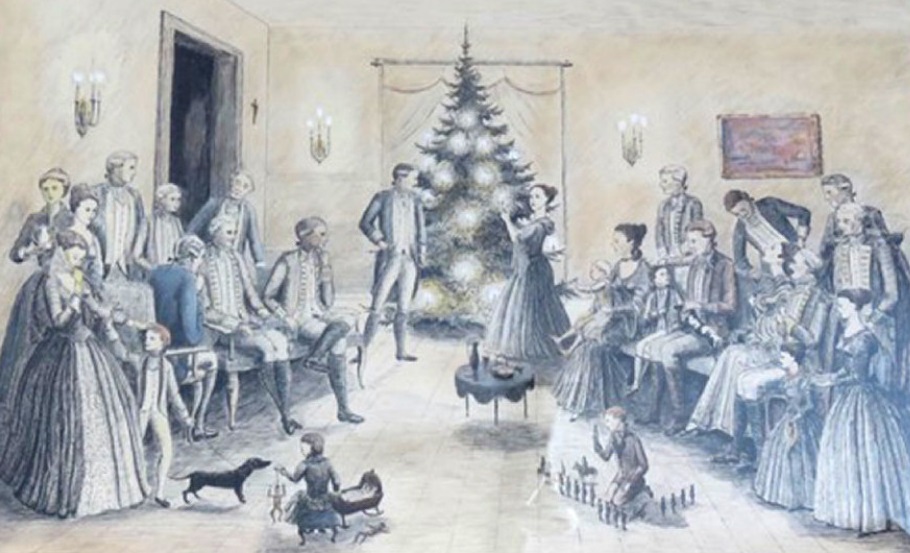The first Christmas tree in Canada takes its origins from the American Revolutionary War.
During that conflict, Major-General Friedrich Adolphus Riedesel commanded troops from the German state of Brunswick. Britain hired these troops to help quell the American rebellion, and Riedesel spent time in Canada. In December 1781, he and his wife Friederike introduced to the Canadian scene the German tradition of the Christmas tree.
That year marked a turning point for the Riedesels. They had arrived in Canada four years earlier, in the spring of 1777. At that time, the Major-General immediately joined a British offensive led by John Burgoyne. Its objective was to drive south from Canada to Albany, New York, in an attempt to cut the Thirteen Colonies in two. Friederike joined him on this campaign. After some initial success, Burgoyne’s army surrendered on October 17, 1777 after a series of battles near Saratoga, 40 kilometres short of Albany.
Riedesel and his wife became prisoners of war. For two years they were detained in Massachusetts, and later Virginia, before being paroled in British-held New York City in 1779. They were finally released in 1780.
The family arrived back in Canada in 1781. Friederike was eager to normalize her family’s life after so many years to hardship. They became housed in what is now known as the Maison des Gouverneurs in Sorel, Quebec (pictured below). That Christmas, she procured a balsam fir tree, erected it in a prominent spot in the home, and decorated it with fruit. As a final touch, she added white candles, which she lit to make the tree illuminated. It was the first Christmas tree in Canada.
 On the 200th anniversary of the Riedesel tree in 1981, Canada Post issued a commemorative 15-cent stamp. Designed by German-Canadian Anita Kunz, it depicts the likely appearance of the decorated tree. Approximately 66 million examples of the stamp were produced.
On the 200th anniversary of the Riedesel tree in 1981, Canada Post issued a commemorative 15-cent stamp. Designed by German-Canadian Anita Kunz, it depicts the likely appearance of the decorated tree. Approximately 66 million examples of the stamp were produced.
 The St. Lawrence Branch of the United Empire Loyalists’ Association of Canada offers wishes, to you and yours, a very Merry Christmas!
The St. Lawrence Branch of the United Empire Loyalists’ Association of Canada offers wishes, to you and yours, a very Merry Christmas!

